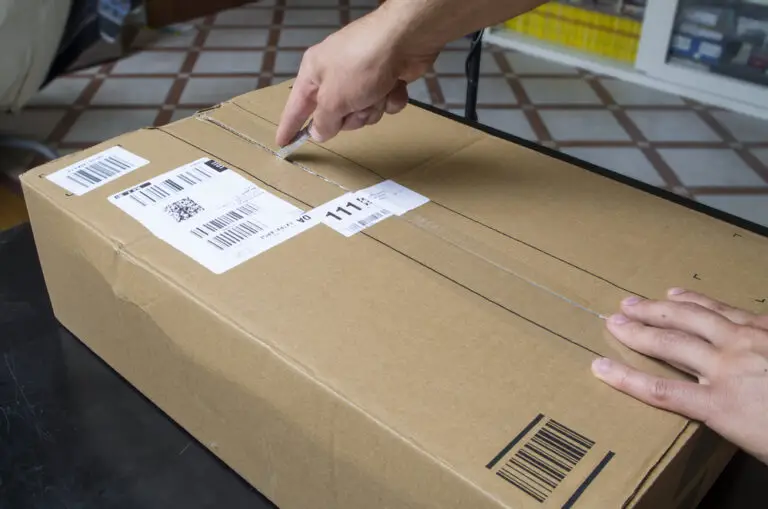25 Ecommerce Marketing Strategies That Actually Work (2024)

The purpose of eCommerce marketing strategies is to get more people to see your site and products who could potentially become paying customers.
Using ecommerce marketing strategies, you can widen your customer base, increase your conversion rate, and even increase average order value. The best marketing strategies cultivate a strong brand identity and increase site visitors.
Ecommerce Marketing Strategies
1. Do Things That Don’t Scale
In the early stage of startups, it’s better to focus on doing things manually rather than rushing to grow/scale up too quickly. This ecommerce marketing strategy allows you to get to know your audience and focus on developing products that actually work.
Visit and add value to niche forums, Reddit threads, and quora questions so you can discover more about your target audience and promote an online store.
Make friends with complementing (but not competing) brands so you can share your audiences and support each other on social media.
How to Do It
- Ask friends, family, and coworkers to share your online store and social media.
- Visit online communities in your niche and discuss useful information while also getting to know your potential customers.
- Focus on building a small, loyal customer base who will market you using word-of-mouth recommendations and reward them with perks.
2. Sell Directly on Social Media
Many consumers now use social media as the main place to find new products, especially through content creators and online stores. To remove points of friction and make it easier for customers to buy from you anywhere, try social commerce by creating a shoppable Instagram or Facebook store.
Selling on social media increases the channels through which customers can interact with your store.
How to Do It
- Advertise your products using your Instagram or social media account as well as selling directly on there.
- Use Instagram, Facebook, and TikTok stories to promote your products and show their use in real time.
- Use hashtags to allow your online store to appear organically in user searches and on explore pages.
3. Create and Run a Community
Create and run an online community to create a gathering place that you control, where you can add value and promote yourself. You can choose to set this community as public, private, or only customers. It could be a forum, Reddit group, or Facebook group.
This marketing strategy for ecommerce allows you to create a strong base of loyal customers while gaining useful insights for your marketing techniques.
How to Do It
- Post regular polls and surveys on the group to collect customer data about your products that you can use for future marketing strategies.
- Share new products and product updates on the pages, so your most loyal customers can see them first.
- Share exclusive deals and discounts with this group to make them feel valued and increase conversion rate.
4. Start an Affiliate Marketing Program
An affiliate marketing program allows other companies to advertise your products organically on their site for a commission if a customer visits your site. This ecommerce marketing idea is great because it gets your product in front of a whole new audience that might not have found your products otherwise.
You can test it to get the ball rolling and later opt out if it’s not effective.
How to Do It
- Opt for a mix of sites that are and aren’t similar to yours, to reach a mix of your existing audience and a whole new set of consumers.
- If you have the budget, work with professional affiliate marketing software for the best results.
- Make sure your product descriptions are optimized to convert customers that click product affiliate links.
5. Partner With Complementing Brands
A great way to get your brand seen by a whole new audience is to partner with complementary brands that already have a strong customer base. This type of online marketing for ecommerce is perfect because you can cross-promote your brand and products to each other’s audiences, making it an effective partnership for everybody involved. Both the brands and customers win.
How to Do It
- Make sure you partner with brands that complement your brand, but don’t directly compete. If you’re a skincare brand, for example, partner with a makeup brand.
- Consider creating a product in collaboration that appeals to fans of both brands.
- Create a social media marketing campaign that introduces customers to the new partnership.
6. Enable Push Notifications
Encouraging customers to enable push notifications on browsers is a great ecommerce strategy for increasing sales because it alerts customers to new products, new blog posts, and any other information that the customer might find interesting.
This online store promotion benefits your business because customers might see new products they like the look of, and it benefits your customers because they can be easily updated.
How to Do It
- Another way to alert customers to new activity is to ask them to turn on the feature for notifications when you post something new on Instagram, or any other mobile apps.
- Make sure your push notifications are also enabled for your store so you can see any sales or queries quickly for a fast response time.
- Choose the notifications you send carefully. Otherwise, customers might get bored of receiving so many notifications and disable them.
7. Sell Through Google Shopping
When people want to buy a product, but don’t know which store to go to directly, they often search for a product in Google Shopping. Listing your product here can allow customers to find you without knowing about your brand beforehand.
This is one of the best marketing strategy for ecommerce because you attract people who are already searching for a product like yours, making them more likely to convert.
How to Do It
- Optimize your Google shopping listing using high-quality images, keywords, and a well-written product description.
- Make sure your site’s product pages are optimized so that customers are more likely to convert once they click the ad and go through to your site.
- Advertise your best-performing products for the most cost-effective approach.
8. Start a Podcast
Starting a podcast is an excellent ecommerce marketing tactic for attracting new customers to your store without them knowing that they’re being marketed to.
With a podcast about your industry, you can prove your status as an industry expert, making consumers more likely to trust the legitimacy and expertise of your brand. Post episodes as regularly as possible to keep up the momentum.
How to Do It
- Focus on adding value first and marketing second, so it’s not obvious that the podcast is an ecommerce promotion strategy.
- Have expert industry guests on your podcast to show customers that you’re knowledgeable about the sector and make the podcast more interesting.
- Include customer stories in the podcast to create a closer relationship with your target audience and existing customer base.
9. Sell on Different Marketplaces
Selling on a marketplace is effective for multiple reasons. People already go to marketplaces with purchase intent, so they’re looking for something to spend their money on. All you need to do is make sure they spend it on your store, not a competitor’s store.
Plus, the more marketplaces you sell on, the easier it is for customers to find you, making this an excellent ecommerce marketing idea.
How to Do It
- Maximize your marketplace listing using keywords and other SEO techniques.
- Focus on getting some reviews on your marketplace profile for legitimacy. You could get friends and family to buy a product from you and leave a review in the first instance to get the ball rolling.
- Focus on marketplaces that attract the demographics you’re marketing to.
10. Build an Email List
Building an email list of one of the most important ways to market an ecommerce business. Once you have an email list, you can send them new product updates, exclusive discounts and deals, cart abandonment emails, and more.
Email marketing is one of the easiest ways to promote new things that your store has to offer, as well as converting customers that haven’t returned to your store for a while.
How to Do It
- Focus on adding value with your emails first, and selling later. Opt for 2-3 value add emails for every 1 sales email.
- Collect email data by creating landing pages and adding pop-ups and sign-up forms to your website.
- Where possible, personalize emails with recommendations suited to the individual customer and by using customer names.
11. Encourage User Generated Content (UGC)
User-generated content is the golden standard of content because it provides other consumers with proof that they can trust your product, and it also helps you create a more authentic marketing campaign.
This promotion strategy for ecommerce allows users to feel involved in your brand story, while providing you with excellent social proof. User-generated content comes most often in the form of images and videos.
How to Do It
- Encourage users to send their images and videos featuring your products and share them yourself.
- Share social media posts featuring your products on your site. For example, if you own a clothing store, post images of customers wearing your clothes with the caption ‘Get the Look’.
- Create a brand-specific hashtag that customers can use when they post content featuring your products.
12. Build a Social Following
While marketing an ecommerce website usually involves social media, it’s crucial to have a social media following to advertise to in the first place. Having social media followers means not only can your store reach more consumers, but these customers might share your content themselves.
Your social media followers can become a valuable community through which you can market new products.
How to Do It
- Based on age group and demographic, know which platform your target audience uses the most and focus on building followers there.
- Start producing content that’s relevant to that audience and actually adds value to their lives.
- Encourage your followers to interact with your content using polls and surveys and creating brand-specific hashtags.
13. Host Contests and Giveaways
Hosting contests and giveaways on social media is an excellent way to build engagement, get attention, and increase your follower counts. It’s also a great way to do ecommerce promotion because the winner of the giveaway will likely post information about the product they won on their own pages.
The more interactions your profile receives, the more the algorithm will prioritize showing it to other users.
How to Do It
- Make following your profile one of the prerequisites for entering the contest or giveaway to increase your follower count.
- Alternatively, make it a giveaway to reward existing customers by requiring an image of a previous purchase to enter.
- Host contests every 1-2 months to refresh your follower count and keep users engaged.
14. Educate Through Blog Content
An ecommerce tactic that’s been proven over the years to get more sales is creating a blog for your online store. This blog should be educational, with the main purpose of adding value, and the secondary purpose of increasing sales.
Having a blog engages readers, attracts traffic to your site, and also lets consumers know that you’re an expert in your sector.
How to Do It
- Optimize your blog for SEO using keywords, headings, images, and other popular SEO techniques to attract new customers through search engines.
- Use research and statistics to back up the information in your blog and make your brand seem more trustworthy.
- Create how-to guides in your blog to genuinely educate readers.
15. Promote Through Influencers
Many consumers trust influencers as much as recommendations from friends and family and more than traditional celebrity endorsements. Promoting your products through influencers is a very effective digital marketing strategy because so many consumers trust the opinion of influencers, and they can create authentic content that doesn’t appear like an advert.
This internet marketing technique is also probably the cheapest paid media option for branding and reach.
How to Do It
- Opt for accounts with between 10k and 50k followers because their audience is engaged but not so big that they won’t work with you.
- Give influencers creative freedom for the ads, so they appear more authentic.
- Feature content creators in the adverts on your account, so consumers trust them because they’re seeing a friendly face.
16. Create a Referral Program
The best type of marketing is marketing that your customers do on your behalf, such as word-of-mouth recommendations or sharing your products on social media. Offering a referral program is a great online sales strategy because consumers are more likely to trust recommendations from people they know.
Plus, the customers who refer friends get rewarded, so they have an incentive to continue to refer others.
How to Do It
- Offer customers a choice out of three types of bonus, such as free shipping, a discount, or a gift, so they can feel like their referral is being rewarded in a way that works for them.
- If you can afford it, useCommerce loyalty software that allows you to create referral bonuses.
- Offer a reward for both the customer who does the referring, and the new customer who gets referred.
17. Optimize Ecommerce SEO
Google is one of the best, if not the best marketing channel, but getting to the top of Google for consumers to notice you is challenging. To do it, you’ll need SEO. This strategy is one of the most profitable, but can be hard to execute.
You’ll need to optimize your pages for Google’s algorithm, which will require some research about SEO best practices.
How to Do It
- Research keywords that are popular in your sector or about your product and include them in your site.
- Try local keywords because you’ll be competing against fewer other businesses using the same keywords.
- Include plenty of blog content in your site that is well-structured, has images and H1 H2 etc headings, and keywords.
18. Collect Leads With Quizzes
The more data you have about your target audience, the easier it is to market to them effectively. Collecting lead data with quizzes is a great business strategy for ecommerce because people are more likely to hand over data when it’s in something fun, like a quiz.
You can send out this quiz via email or include it as a feature on your website.
How to Do It
- Because quizzes are so effective, you should aim to include them in as many types of marketing as possible, such as social media and even PPC campaigns.
- To increase sales, upload quizzes such as ‘which X is best for you’ to push customers towards a particular product.
- Make the quizzes as fun, engaging, and easy as possible to encourage participation.
19. Run Paid Ads
There are tons of places where you can run paid or sponsored adverts, and it’s an excellent digital ecommerce strategy to boost sales. Depending on where your key target demographic looks, your ads might be more suited to certain social media pages or Google.
You can create Google search ads, Google shopping ads, Facebook and Instagram, TikTok, or Twitter ads.
How to Do It
- If you don’t have the budget for adverts, you could always sponsor or boost some of your marketplace listings.
- To save money, only run paid ads on the platforms you know your target audience uses regularly.
- Make the ads as authentic as possible, either by working with a content creator or using user-generated content.
20. Find Local Promotion Opportunities
Just because eCommerce stores are available to consumers worldwide, don’t forget about your local community in your ecommerce launch strategy. Local promotion opportunities can attract a group of customers that will feel loyal to your store because of their desire to support local businesses.
Find out where your target audience tends to live and hang ou, and target these places with old-fashioned marketing techniques.
How to Do It
- Partner with local complementary but not competing businesses and create a joint marketing campaign to increase both of your customer bases.
- Attending local events can be a great way to grow an ecommerce store. You can show off your products and then encourage customers to find them online.
- Ask for friends in the community to promote your store to others through word-of-mouth recommendations.
21. Implement Retargeting Ads
One of the most important aspects of marketing ecommerce business is gaining repeat customers. If you have some customers that have visited your site previously but haven’t returned for a while or completed a purchase, try the ecommerce campaign of retargeting ads.
This is the best ecommerce strategy because these customers are already familiar with your brand and product, so you’re not starting from scratch.
How to Do It
- Use personalized and targeting marketing to show customers products they’ve previously looked at or similar products. This will make them more likely to convert.
- Experiment with A/B testing until you find a set of retargeting ads that convert customers.
- Use persuasive copy or exclusive deals to combat sales objections that customers might have.
22. Use Exit Intent Popups
Exit intent pop-ups appear when users try to exit your site without buying anything. They should be used to convince the site visitor to stay and buy something, and they usually contain some sort of exclusive offer to overcome objections.
This ecommerce marketing is effective because it can often give customers the last push they need to buy something from your store and it benefits the customer with a reward.
How to Do It
- Make sure to include an eye-catching call to action to get the customer to convert.
- Combine exit intent pop-ups with data collection by asking users to sign up for a mailing list or similar and input their contact details.
- A/B test a few different pop-ups to see which is more effective at stopping users from exiting the online store.
23. Send Cart Abandonment Emails
Some of the most common reasons for users abandoning their carts is high shipping costs, being distracted, or having a last-minute panic about the money. You can reduce the likelihood of users abandoning carts by removing the friction from the process and sending an email to remind the customer of what’s in the cart.
It boosts the conversion rate to offer a discount or free shipping in your email.
How to Do It
- Include a discount or some other freebies in your cart abandonment email to remove concerns about costs.
- Create a sense of urgency by telling the customer there are limited supplies of their product left and they’re selling out quickly.
- Recommend other similar products in case they didn’t want that exact product but not something similar.
24. Upsell and Cross-Sell
Upselling is encouraging customers to upgrade to a more expensive product, an add-on, or a more expensive subscription plan. Cross-selling is when you sell customers products to complement another product they’ve bought.
Both ways of marketing ecommerce are effective because they increase the average order value. This means you don’t have to attract more customers, you simply have to ensure that every customer buys one or two extra things.
How to Do It
- Choose the products to cross-sell based on what customers who have bought a particular product also purchased.
- Keep it simple; don’t offer too many products at once at risk of overwhelming the customer and having them walk away empty-handed.
- Offer bundles with a discount to encourage customers to buy more than one product at once.
Related: 12 Best Converting Shopify Themes That Actually Convert Better
25. Engage Through SMS Marketing
SMS marketing is another channel through which you can attract new customers and engage existing ones to buy more products. You can send out SMS messages for all types of purposes, such as abandoned carts, discounts, or even offering customer support.
SMS marketing can be a quick, easy, and relatively cheap way to remind customers of offers and re-engage them.
How to Do It
- Collect the mobile numbers of your customers through well-designed landing pages, pop-ups, and sign-up forms.
- Personalize text messages by using customer names and giving personalized product recommendations.
- Include calls to action to get customers to carry out the desired action. This can be anything from checking out a new collection to adding a product to basket.





